Montesquieu Goes Digital: Introducing Saga’s Governance Model
Following the previous posts in the series concerning the inevitability of central decision-making, what we learned from existing governance systems, and our voting solution, we can now conclude our series by introducing Saga’s governance system.

Representative institutions, recalibrated
The fundamental premise of Saga is of a social contract — designed to represent its sovereigns, the currency holders, and for carrying out their general will effectively. To achieve this we combined components from nation-states, corporations, and decentralized systems.
The structural basis is the separation of nation-states’ powers in a multi-branch structure, allowing various entities to specialize in their respective functions while finding a balance between them.
Before we move on to describe the entities and the relations between them, we need to explain the concept of liquidity in the context of characterising each entity:
Liquidity means the extent to which participant stances are manifested in governance in real-time.
For example, in the context of in-office terms, a system in which elected officials can be simply replaced at any moment would be of high liquidity in comparison to a fixed term system that requires special conditions for its untimely termination.
Laying out the governance system
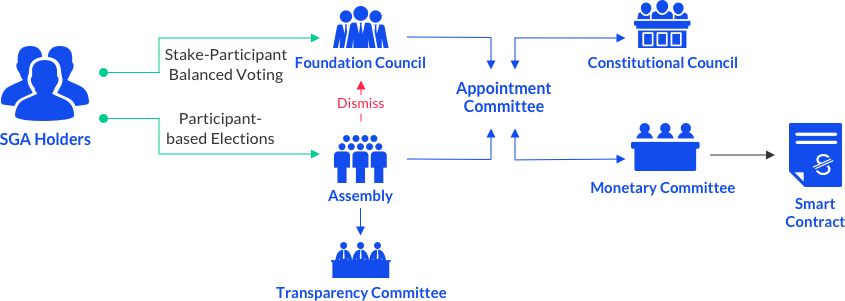
We begin with the Participants — the currency holders; Saga’s sovereign. They exercise their sovereignty through elections to the central executive body — the Foundation Council, and through participation in the system’s deliberative body — the Assembly.
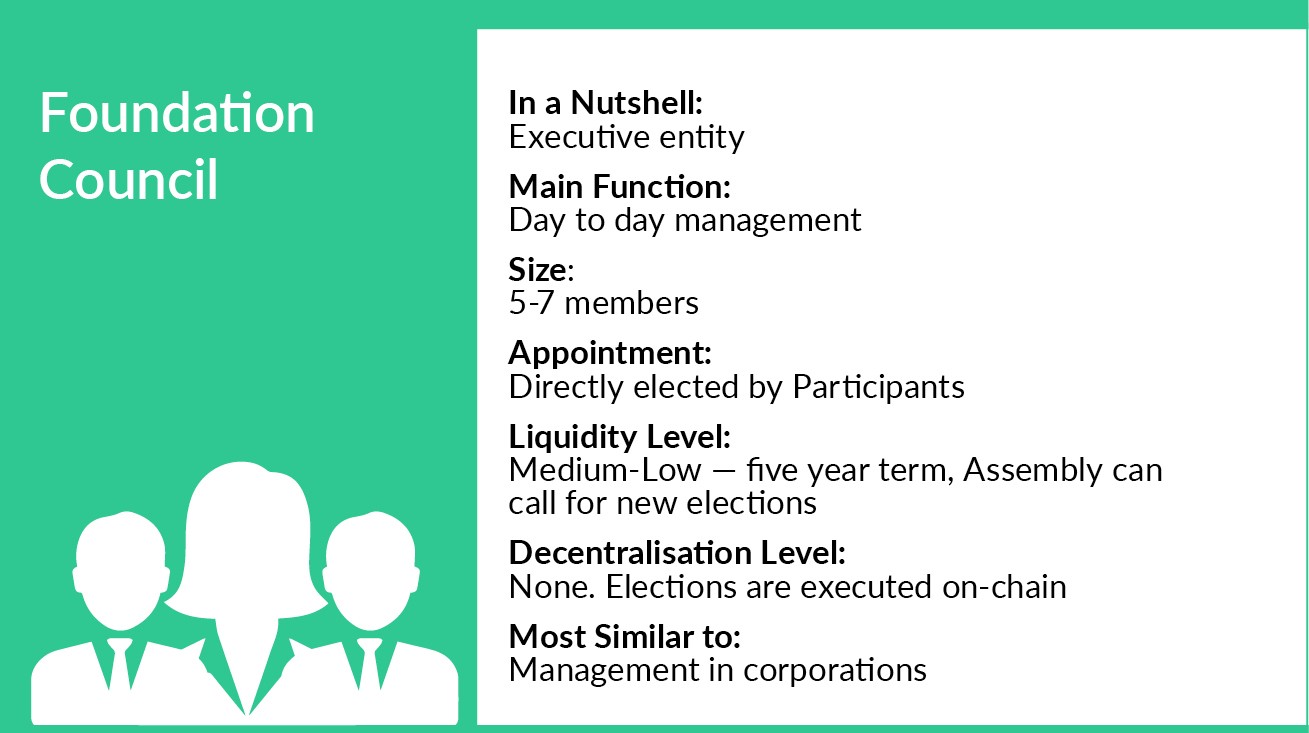
The Foundation Council is the main executive entity in Saga’s governance system. It is a team of elected professionals in charge of managing Saga’s ecosystem and operations; designed in the spirit of a corporation’s lean managerial body, capable of efficient and swift decision making.
We see a professional management team as a prerequisite for effective representation and for the success of the currency; specifically for making knowledge-based and timely decisions. We discuss the choice of relying on a centralised decision-making body in length in our first and second posts.
The Foundation Council is also characterized by low liquidity — the Council is elected to a five-year term, allowing them adequate time to execute the agenda in which they were elected. The Council can be dissolved by the Assembly (as detailed below in the Assembly section).
The council is directly elected by holders and voting power is determined in accordance to Saga’s voting method, developed to dynamically balance between stake-based and participant-based voting while taking into account the concentration of holdings in the Saga economy.
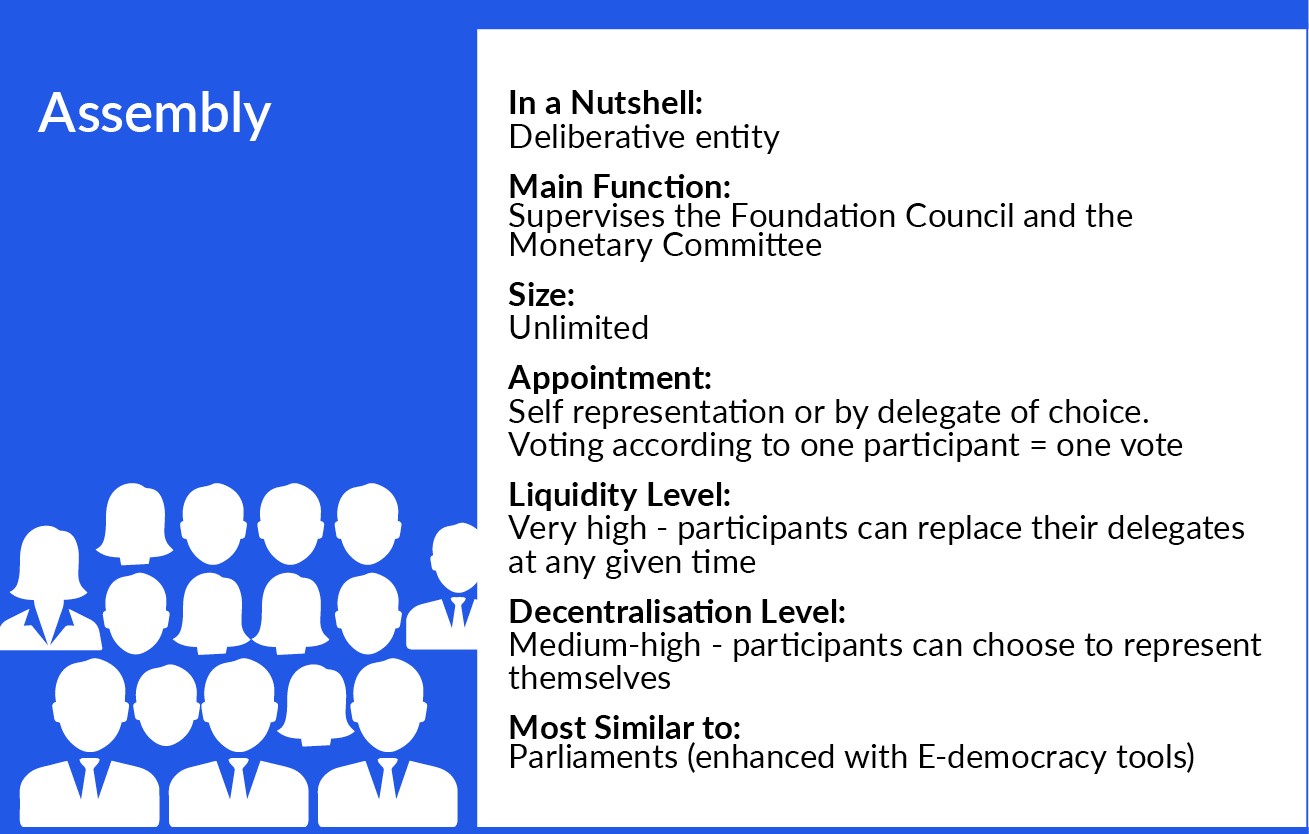
The Assembly is the deliberative entity in which Saga’s participants can voice their opinions and make collective decisions. It is highly decentralized, as Participants can choose to either represent themselves in the Assembly or appoint a delegate, i.e. Assembly Member, to vote on their behalf.
Delegation is fully liquid and the Participants can replace their delegates at any given moment. Voting in the Assembly follows the ‘one participant — one vote’ principle so each Assembly Member‘s voting power is equal to the number of participants that have chosen him to be their delegate.
The Assembly supervises and balances the powers of the Foundation Council and the Monetary Committee. Its responsibilities and authority include:
The Assembly also appoints and guides the Transparency Committee which serves as the transparency agent for oversight and disclosure in Saga’s ecosystem. It supports knowledge-based deliberations in the Assembly and promotes the accountability of the Foundation Council.
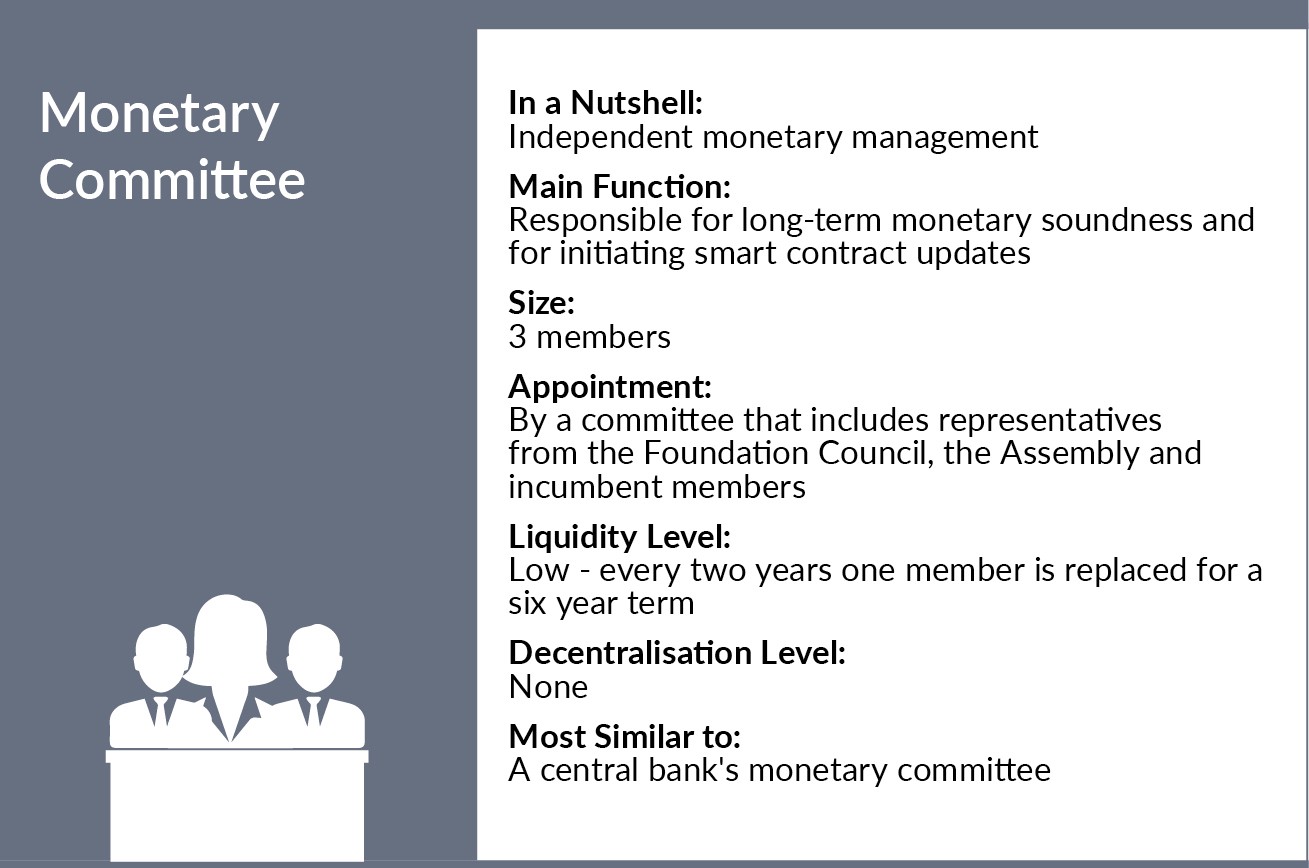
The Monetary Committee is responsible for the long term stability and monetary soundness of the Saga currency and it is authorized to determine Saga’s monetary policy and its implementation as a smart contract. This is necessary as monetary decisions require high professional understanding and a long term outlook while the Foundation Council may have more short term considerations.
The committee’s structure and authority are inspired by the independence of central banks and are reflected in its design and in its low level of liquidity. An ad-hoc Appointment Committee is responsible for electing Monetary Committee members. The Appointment Committee includes representatives from the Assembly, the Foundation Council, and incumbent members of the Monetary Committee, promoting an expertise-based selection of candidates’ while maintaining the Participants’ representation.
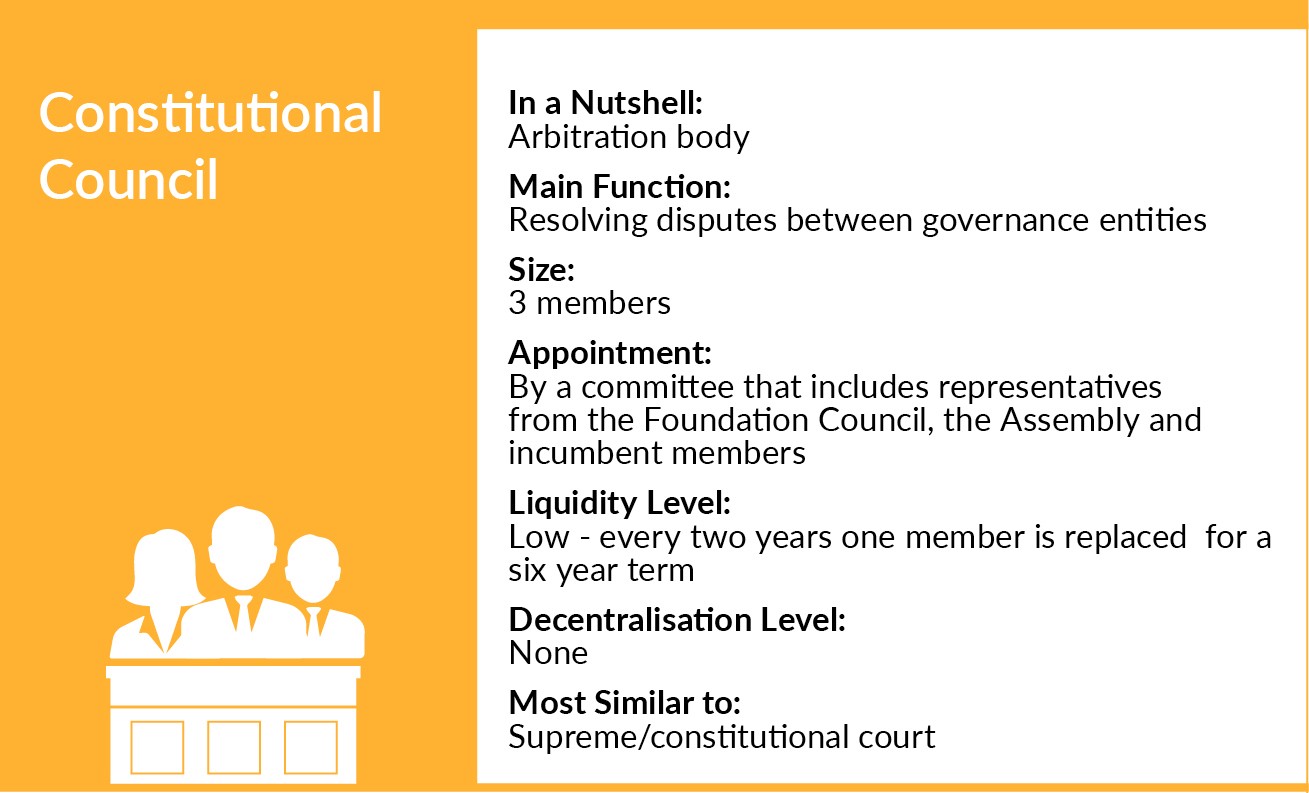
The Constitutional Council is the mandatory arbitration entity for dealing with disputes between governance entities. It can be viewed as Saga’s equivalent to a supreme court. As part of its role, the Constitutional Council interprets Saga’s constitution for ensuring that it is maintained. Its appointment procedures are similar to those of the Monetary Committee.
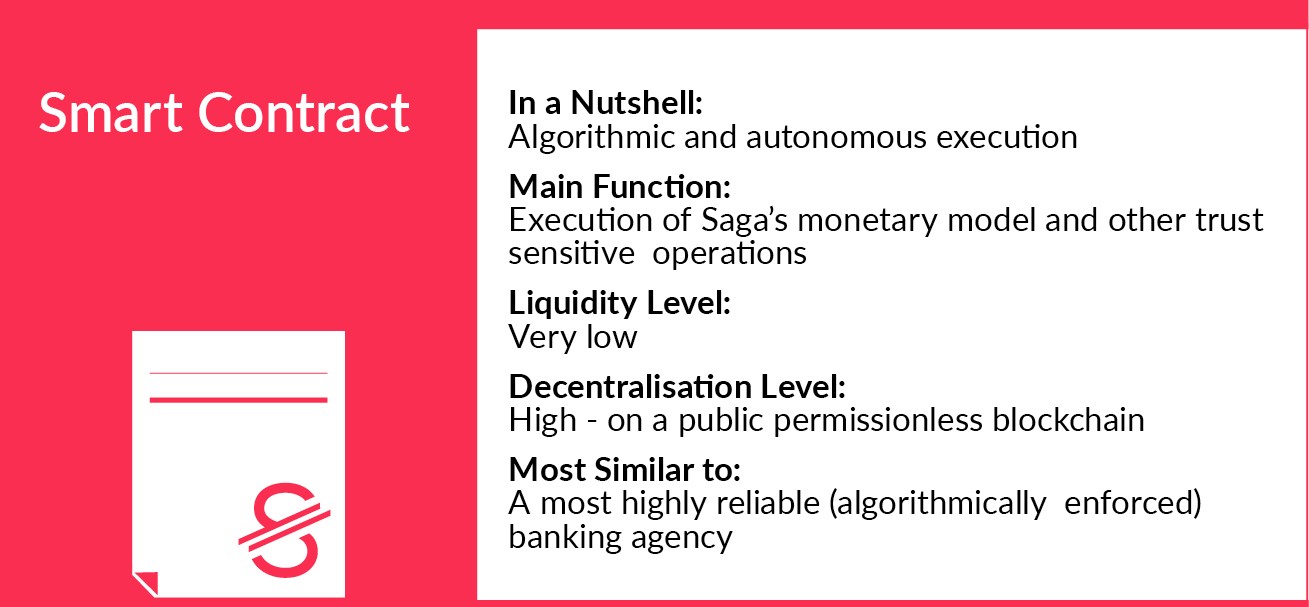
Finally, the Smart Contract is also defined as a standalone entity in Saga’s governance. The smart contract serves to autonomously execute trust sensitive operations: implementation of Saga’s monetary model, updating the ledger of holdings and certain voting procedures.
Its level of decentralisation is high as it runs on a public permissionless blockchain, ensuring its impartial execution. It has a low level of liquidity as some of its components immutable (such as the ledger of holdings and transactions), while other components are open to amendments that can be initiated by the Monetary Committee. In any case, amendments take effect only after a review period in which participants can vote on-chain to reject the suggested change.
Saga’s Constitution — Finally it is important to note that the governance model system will be sanctioned in a constitutional document that will establish the sovereignty of the currency holders, anchor their rights and delineate the governance system.
In any case, Saga’s governance model will surely continue to evolve over time and it is specifically designed this way to support its evolution.

Concluding the series
Summing up the blog series, the Saga project began with a focus on devising the most advantageous monetary model in the crypto ecosystem. However, we soon discovered that prevalent decentralized governance solutions do not provide a viable response and that we have no choice but to develop our own governance framework.
In the process of dealing with this challenge, we came to the understanding that we need to mix together past, present, and future for designing viable governance for a global currency.
And then there is also the bigger picture of governance in the digital age. In this context, we see Saga’s governance model of non-nation-state large-scale representative entity as a step forward in the evolution of human governance. In any case, the Saga’s governance model will surely continue to evolve and it specifically designed to support its evolution.
We look forward to any comments and suggestions on the post, and you can contact us directly at [email protected].



